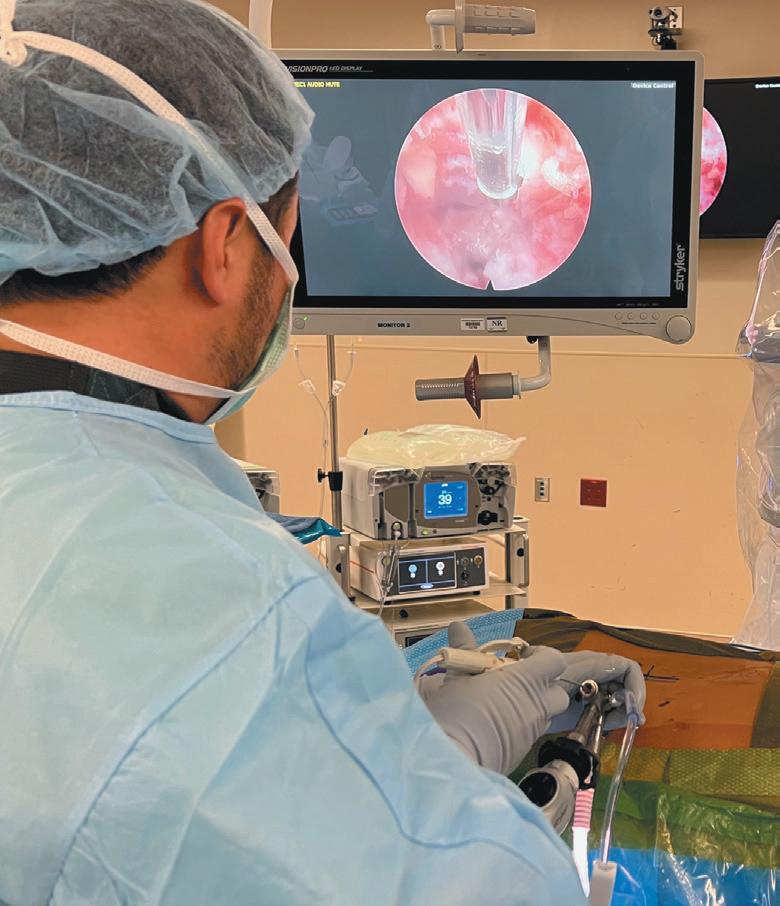
1 minute read
Endoscopic Spine Surgery Reaches Birmingham



By JAne eHrHArDt

Endoscopic spine surgery (ESS) has been around for decades in other parts of the world, but still lingers in its infancy in America. “If you travel to Europe— especially Germany or southeast Asia, Japan—endoscopic decompressions and discectomies are almost the gold standard,” says Daniel Kim, MD, spine surgeon with Southlake Orthopaedics and one of the first to be performing the procedure in Alabama.
The slow introduction of ESS to the U.S. likely stems from the fact that much of the development of the technique occurred in other countries. In addition, U.S. doctors are not being trained for it coming out of fellowship, and it is not something readily picked up. “Since it’s a completely different way to do spine surgery, it’s very difficult for even more experienced surgeons to just adopt it right off hand,” Kim says, who has performed over 30 procedures in the last 18 months.


Endoscopy takes minimally invasive spine surgery to its most advanced, state-of-the-art form to produce a quicker recovery time and less recurring pain for the patient. It differs from minimally invasive, micro-invasive, and laser spine surgeries. “All the work that you do at the structures of interest within the spinal canal is the same,” Kim says. “The difference is all in the collateral damage that’s required to do the job itself.”
The entry is a mere eight millimeters for endoscopy versus two or five centimeters for tubular and
(CONTINUED ON PAGE 6)










